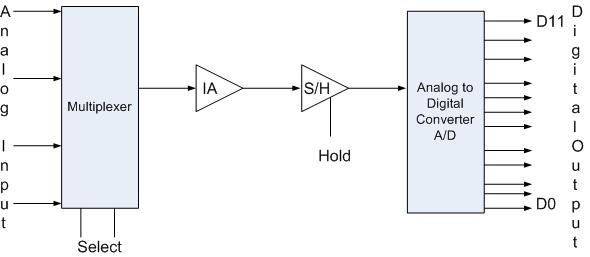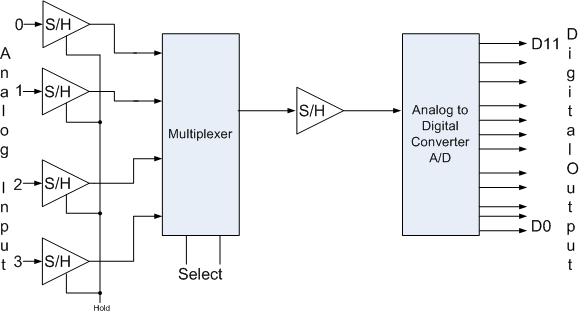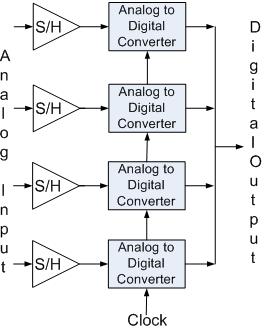AMAZON multi-meters discounts AMAZON oscilloscope discounts
The number of input channels available determines the number of devices you can connect to an A/D (analog-to-digital converter) board (this may be part of a PCI all-in-one DAQ board, an external USB DAQ module, or similar device). 4 to 64 separate channels are usually available. In addition, accessory products like expansion cards allow compatible A/D boards to sample up to 256 inputs.
Input channels may be single-ended (SE) or differential (DI), a characteristic you can set on many data acquisition boards. Product specification may present this as "16SE/8DI", which means one can set the DAQ board for 16 single-ended or 8 differential inputs.
Since there are only half as many differential inputs as single-ended, in which situations would you choose differential? Differential inputs offer a type of noise immunity called common-mode rejection, or CMRR (common-mode rejection ratio), which is measured in decibels (dB). From the nomenclature, differential inputs react mainly to the differences in voltage levels between the two signal leads (inputs), and improve accuracy in situations where long cables, low-level input ranges (<1 V full-scale),or high-resolution converters (>16bits) are used. The use of differential inputs are also suggested in cases where input signals from different devices are at different ground potentials. This is because differential inputs can "float" several volts with respect to one another, to analog ground, and to power ground.

above: Commonplace (or low-end) DAQ systems have a single sample-and-hold
circuit, and sample inputs sequentially.
Another type of input, called pseudo-differential, offers enhanced common-mode rejection in designs where there little space or power for true differential input circuitry. Pseudo-differential design allows connections for both the low-end and the high-end of each input to attain superior analog common-mode rejection. But, unlike true differential, only one of the signals is actually sampled by the analog-to-digital (A/D) converter of the DAQ board.
Applications, such as destructive testing, often require
the simultaneous sampling of several inputs. This necessitates
a type of DAQ system called Simultaneous Sample and Hold (SS&H). SS&H systems use a separate sample-and-hold (S/H) circuit on each input (see figure
below). When sampling commences, all circuits simultaneously switch to
hold, freezing each input signal until it can be sampled by the analog-to-digital
(A/D) converter. In contrast, common or low-cost DAQ systems use a single
sample and hold circuit, and must sample inputs sequentially.

above: Simultaneous Sample and Hold
systems have one sample-and-hold input for each input, and can therefore freeze values
on all inputs simultaneously.
Simultaneous sampling is also a characteristic of delta-sigma A/D converters. Since delta-sigma designs use a separate A/D converter per channel, it's possible to sample all inputs simultaneously.

Other Resources on this Topic:
Sample and Hold in DAQ Systems (Stanford University) -- good comments on problems with a Sample and Hold.